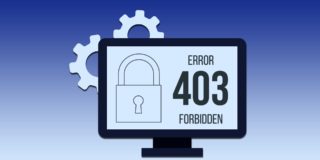Using ISO Image Files
Every now and then, you will come across an ISO file and you may wonder what to do with it. So, what is it and what do you do with it? People new to computers may not know. In this article, I’m going to introduce an ISO file to you. And for those who already know about ISOs, I’m going to introduce a couple tools to you which you may find helpful.
What is an ISO?
An ISO file is essentially an image file of the contents of an ISO 9600 file system. What the heck is that? Well, ISO stands for the International Organization of Standardization, which is the group which sets the standards used in various industries. One of the many standards they have defined is ISO 9600, which is the standard used for how to store files on a CD-ROM. So, if you connect the dots here, an ISO file is essentially an image file of a CD-ROM and it’s contents. It is an entire CD in one single file with an *.ISO file extension.
An image file is a single file which in itself is a complete byte-by-byte copy of what the contents of a disc looks like. So, let’s say you have a CD-ROM with some data on it. You could create an ISO image of that disc and that ISO file would be an exact copy of the CD-ROM.
ISOs are not just for CD-ROMs. They are images of any optical disc, including a DVD.
Uses for an ISO
An ISO file is a convenient way to:
- Archive CD-ROMs on a hard drive (in case the disc is damaged or lost)
- Distribute CD-ROMs over the internet
Some people like to create ISO images of CDs and DVDs for archival purposes. For example, if you buy a new software program and it comes on a CD-ROM, you can create an ISO image of the program disc and store it on your hard drive. If you ever lose the original disc, you could burn a new one using the ISO.
If you want to distribute CDs or DVDs electronically, ISOs are a good way to go. You see this often when various Linux distributions. Since Linux is free, they offer it for download. Well, like any operating system, it is installed to the computer via CD. So, you can just download the ISO file from the internet, burn your own CD, and then install the program.
How To Make an ISO
There are many CD/DVD writing programs that will allow you to create ISO image files of a disc. Of the many options, some are:
- Folder2ISO – allows you to create an ISO of any folders on your hard drive
- ImgBurn
- ISO Recorder
- MagicISO – this is my current favorite, but is not a freebie.
Making an ISO differs depending on the program you use, but it essentially comes down to selecting the disc or folders you want to create an image from and then creating the image. You tell the program what to call the ISO. MagicISO is the one that I use and you can create an ISO of any disc with the click of a button.
Using an ISO Without Burning to Disc
Since an ISO image is an exact copy of a disc, it can be used as a CD or DVD without it actually having to be on a disc. This process is called “mounting” the disc image, and it can be done with certain utilities that create a virtual CD-ROM drive.
My favorite is called Daemon Tools. Once installed, you can “mount” an ISO image file and it will actually make it work as if it were an actual CD. If the disc image has an autorun file, it will even run the autorun once mounted. It completely works just like a disc, but it is virtual.
Mounting archived ISO files in this way makes using those images faster. Since the hard drive is faster than a CD-ROM drive, a mounted disc image will get you faster performance. For instance, installing software using a mounted image in Daemon Tools will be much faster than using the CD itself.

















8 thoughts on “Using ISO Image Files”
I have put together this computer, installed two sata drives in it. One I am using for windows xp, the other I want to install windows 7 on. I have a good windows 7 iso file on the xp drive. Can I install the windows 7 to the second hard drive, turn off my computer and change the boot in bios to make the windows 7 install the priority? But an e-machine and it pissed me off, so now I am trying to just make it work on this machine. I have an athlon 64 3700+ chip, only 1g of ram, but am adding more ram as I can. Can someone help me here, please. If this can be done it will save me the trouble of burning the iso to disk and doing the install from it. LOL, computers are supposed to make things easier……..
Thanks to anyone that can help
Thank you for saving me! :D
Great job
Now I know it is possible to mount images without having to write it to disk.
Thanks a ton :-)